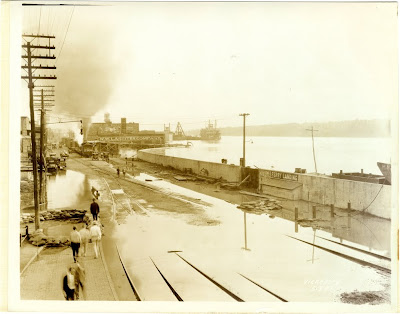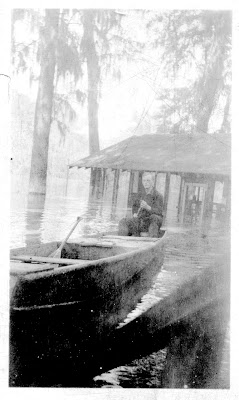(Note: click any image to enlarge it.)
Hurricane Katrina made landfall on the Mississippi Gulf coast on August 29, 2005. It proved to be the costliest natural disaster in United States history as well as one of the 5 most deadly hurricanes in our history. People around the world were transfixed by dramatic television pictures of flooded residents on rooftops and the refugees in the Superdome. They were also amazed at the stupid and inept mayor, who bungled everything. My daughter and I were out of the country when the storm struck and watched the unfolding events on Greek television. As I recall, Greek TV crews were filming and interviewing in New Orleans even before FEMA representatives arrived. Many Greeks have a personal connection with and interest in New Orleans because Greek merchant marine sailors have visited or been stationed there.I did not have a chance to see New Orleans immediately after the storm but spent some time exploring in 2006, when initial cleanup had begun but little restoration was underway. These photographs will show some of the destruction. We will start with a visit to the Lower Ninth Ward, but first let's discuss the geography of New Orleans and the Mississippi delta.
This is a 1720 map from the British Admiralty (click to enlarge). It shows the core of the city with cypress forest and marsh surrounding it.
The figure above shows how the city in 1862 had grown but was still concentrated along the bend in the Mississippi River. The view looking north shows Lake Pontchartrain in the distance (from Illustration from Campfires and Battlefields by Rossiter, Johnson, et al. (New York, 1894), from Wikipedia commons). New Orleans prospered and early in the 20th century, businessmen wondered how they could provide more living space near the downtown. Idea: build levees along Lake Pontchartrain, cut drainage canals, install pumps, and pump out the water. Once the land was drained, the developers cleared out trees and debris, platted the land, and instant suburbia was formed (Gentilly, New Orleans East, and other neighborhoods). The pumps had to be used whenever there was rainfall, and even during non-hurricane storms, they ran continuously to clear out the runoff.
Decades later, scientists learned that land subsidence had been grossly underestimated. Much of the former swamp terrain has continued to slowly sink as the soil dewaters. This is a natural process in all river deltas. As a result, many of the neighborhoods developed after 1900 have settled below sea level. A coworker told me that a common practice every spring was for homeowners to have sand spread over the their house lots to try to combat the settlement. I will leave it to you readers to decide if building suburbia below sea level in an area that needs pumps and depends on the integrity of the levees and on the electric supply is a wise idea.
As of late-2006, very little recovery was underway, utilities were still not available, and the area looked like a ghost town. The streets had been cleared, and you could drive around. Grass was growing in the lots. Houses were unoccupied. Some had been cleared out, while others had their furniture and junk strewn about untouched since the water receded.
Some houses were untouched in over a year, with rotted furniture and abandoned possessions left unvandalized. Most of these mid-century houses were on ground-level slab foundations, utterly unsuitable for a wet area prone to flooding.
The former resident of this house had a sizable collection of LPs. They were probably playable if removed from their moldering jackets and cleaned. Hmmm, will the data on flooded hard drives be retrievable in the future?
There was a lot of graffiti expressing anger towards various agencies or cities. The reference towards Houston may refer to the fact that the Houston police cracked down hard on criminals who had fled New Orleans. They tried to set up practice in Houston and discovered that the Texas public prosecutors and police were much more strict than they had experienced in New Orleans. Don't mess with Texas was true; they really couldn't get away with murder. It underscores how dysfunctional the criminal justice system was in New Orleans in the years before Katrina.
I was surprised how many crushed cars were left abandoned.
This is just a sampling of the destruction wrought by Katrina. We will explore more parts of the city in later articles.
Much has been written about Katrina and its consequences. The article in Wikipedia provides a good summary. Another Wikipedia article describes the Lower Ninth Ward. The article on Hurricane Betsy is interesting reading. A summary on restoration efforts in the Mississippi River Delta is in this New York Times article. John McPhee's classic article "Atchafalaya" in The New Yorker is an excellent and readable introduction to why we control the flow of water and sediment down the Mississippi and the interplay with the Atchafalaya waterway.
Photographs were taken with a Sony DSC-R1 digital camera. This was a 10 mpixel camera with a superb lens.












